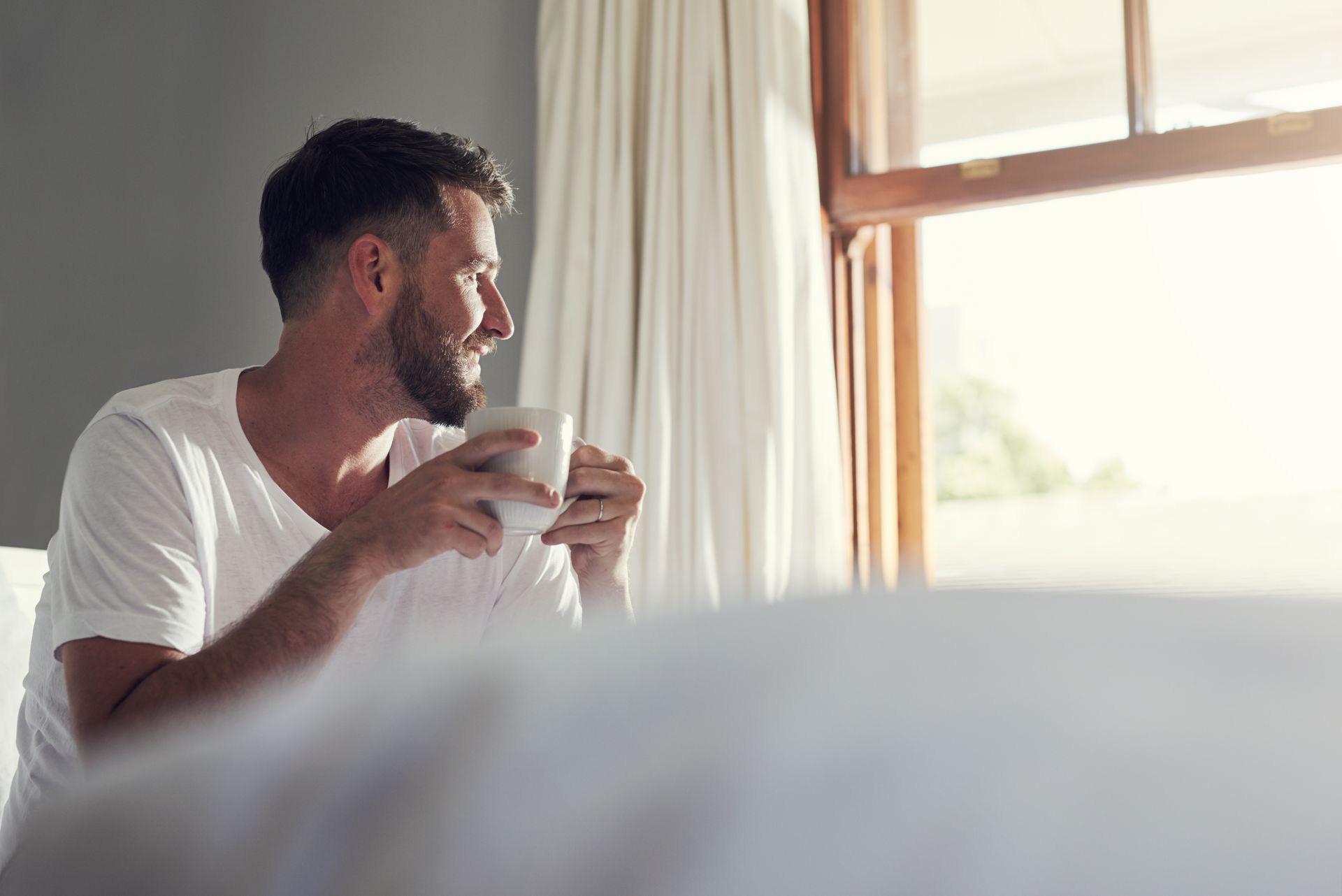March into Mental Wellness: Practical Tips for Managing Stress and Anxiety This Spring
Spring brings renewal and growth, but for many, it can also trigger stress and anxiety. Learn practical strategies to nurture your mental wellness during this transitional season.
The Spring Transition: Understanding Seasonal Effects on Mental Health
As winter's chill gives way to spring's warmth, many of us eagerly anticipate longer days and blooming landscapes. However, this seasonal transition affects more than just our environment—it can significantly impact our mental wellness. At Harborside Psychiatry, we recognize that spring brings unique challenges and opportunities for managing anxiety and stress.
While some experience relief from winter blues, others find spring's changes unsettling. Fluctuating weather patterns, seasonal allergies, and shifting routines can all contribute to heightened anxiety during this time. Additionally, many people experience pressure to participate in "spring cleaning" or engage in increased social activities, which can feel overwhelming.
Understanding these seasonal influences on your mental health is the first step toward developing effective stress management strategies tailored to spring's unique characteristics.
Recognizing Spring Anxiety Triggers
Before implementing stress management techniques, it's important to identify what specifically triggers your anxiety during spring. Common spring-related anxiety triggers include:
- Seasonal allergies: Physical symptoms can exacerbate anxiety and disrupt sleep
- Changing schedules: Daylight Saving Time adjustments can impact sleep patterns
- Weather fluctuations: Unpredictable weather can create uncertainty and planning stress
- Social expectations: Increased pressure to participate in outdoor and social activities
- Body image concerns: Anxiety about wearing lighter, more revealing spring clothing
- Transitional uncertainty: General discomfort with change, even positive changes
Many people don't connect these factors to their increased anxiety levels, but recognizing these triggers allows for more targeted anxiety relief approaches.
Evidence-Based Strategies for Spring Stress Management
1. Reset Your Sleep Routine
Quality sleep forms the foundation of mental wellness, yet spring's time changes and increased daylight can disrupt sleep patterns. To counter these effects:
- Maintain consistency: Keep your sleep and wake times consistent, even on weekends
- Create darkness: Use blackout curtains to counter extended daylight hours
- Develop a wind-down ritual: Establish a calming pre-sleep routine with activities like reading, gentle stretching, or meditation
- Limit screen time: Avoid blue light from devices at least one hour before bedtime
- Monitor allergens: Change bedding frequently and consider an air purifier to minimize nighttime allergy symptoms
Research shows that improving sleep quality can reduce anxiety symptoms by up to 30% for many individuals. Prioritizing sleep hygiene provides a solid foundation for managing other aspects of spring anxiety.
2. Mindfulness Techniques for Stress: Spring Edition
Mindfulness practices help anchor us in the present moment, counteracting the anxiety that comes from dwelling on the past or worrying about the future. Spring offers unique opportunities to practice mindfulness:
- Nature-based meditation: Spend 10 minutes daily observing spring's gradual changes—new buds, bird activities, changing light patterns
- Sensory grounding: When anxiety rises, engage your senses by identifying five things you can see, four you can touch, three you can hear, two you can smell, and one you can taste
- "Weather watching" practice: Observe changing spring weather patterns without judgment, recognizing that emotions, like weather, are temporary and changeable
- Mindful gardening: Engage fully in the sensory experience of preparing soil, planting seeds, and nurturing growth
These mindfulness techniques for stress are particularly effective during spring as they connect us to the natural renewal happening around us, reinforcing concepts of change, growth, and resilience.
3. Physical Activity Tailored to Spring
Exercise remains one of the most effective anxiety relief tools, reducing stress hormones while boosting endorphins and other mood-enhancing brain chemicals. Spring's milder weather creates new opportunities for movement:
- Start gradually: Begin with 10-15 minute outdoor walks, gradually increasing duration
- Connect with nature: Choose activities that immerse you in natural settings, which research shows provides additional mental health benefits
- Morning movement: Exercise earlier in the day to set a positive tone and avoid disrupting sleep
- Gentle approaches: Consider low-impact options like tai chi, yoga, or swimming if seasonal allergies affect breathing
- Consistency over intensity: Prioritize regular, moderate activity over occasional intense workouts
The goal isn't perfection but consistency—finding enjoyable forms of movement that seamlessly integrate into your spring routine.
4. Nutritional Approaches to Anxiety Management
What we eat significantly impacts our mental wellness. Spring offers fresh, seasonal foods that can support balanced mood and energy:
- Emphasize anti-inflammatory foods: Spring greens, berries, and fatty fish help reduce inflammation that can exacerbate anxiety
- Stabilize blood sugar: Combine complex carbohydrates with proteins to maintain steady energy and mood
- Prioritize gut health: Incorporate fermented foods and fiber-rich options to support the gut-brain connection
- Stay hydrated: Mild dehydration can mimic or worsen anxiety symptoms
- Mindful eating: Use mealtimes as opportunities to practice presence and gratitude
Consider keeping a food-mood journal to identify connections between your diet and anxiety levels, particularly noting how seasonal changes in eating patterns affect your mental state.
5. Managing Seasonal Affective Disorder in Transition
While Seasonal Affective Disorder (SAD) is commonly associated with winter, some experience "reverse SAD" during spring and summer months. Others may struggle during the transitional period between seasons. Strategies to manage these transitions include:
- Light management: Gradually increase light exposure if transitioning from winter SAD
- Maintain structure: Keep daily routines consistent despite changing daylight hours
- Continue light therapy: If beneficial during winter, taper usage gradually rather than stopping abruptly
- Monitor mood patterns: Track emotional responses to weather changes to identify personal patterns
- Seek professional guidance: Work with mental health professionals to adjust treatment approaches seasonally
Understanding your unique seasonal patterns allows for proactive rather than reactive mental health management.
Creating a Spring Mental Wellness Plan
Effective stress management requires intentional planning. Create a personalized spring mental wellness strategy by:
- Identifying your specific triggers: Note which spring-related changes most affect your anxiety levels
- Selecting targeted techniques: Choose 2-3 strategies from those discussed that address your primary challenges
- Building in accountability: Share your plan with a trusted support person or therapist
- Scheduling check-ins: Set calendar reminders to assess what's working and what needs adjustment
- Practicing self-compassion: Recognize that adaptation takes time and setbacks are part of the process
Remember that managing anxiety is not about eliminating stress entirely but developing resilience and healthy coping mechanisms tailored to seasonal changes.
When to Seek Professional Support
While self-help strategies form an important foundation for mental wellness, sometimes professional support becomes necessary. Consider reaching out to mental health professionals if:
- Anxiety interferes with daily functioning for more than two weeks
- Stress management techniques aren't providing relief
- You experience significant sleep disruption despite implementing good sleep hygiene
- Anxiety is accompanied by persistent low mood or thoughts of self-harm
- Physical symptoms of anxiety (racing heart, breathing difficulties, etc.) become severe
At Harborside Psychiatry, we offer specialized support for seasonal mental health challenges, including evidence-based treatments tailored to your unique needs and circumstances.
Embracing Spring's Renewal Mindset
Beyond specific techniques, spring offers a powerful metaphor for mental health: growth requires both nurturing conditions and patience. Just as spring's renewal doesn't happen overnight, improvements in mental wellness develop gradually with consistent care.
Consider adopting a "growth mindset" this spring—viewing challenges as opportunities for development rather than threats. This perspective allows us to approach anxiety with curiosity rather than fear, asking "What is this teaching me?" instead of "Why is this happening to me?"
By implementing these practical strategies while embracing spring's natural rhythms, you can develop a more resilient approach to managing stress and anxiety—not just for this season but as part of a sustainable, year-round mental wellness practice.
If you're struggling with stress, anxiety, or seasonal mood changes, Harborside Psychiatry offers compassionate, evidence-based care to support your mental wellness journey. Contact us today to learn more about our specialized approach to seasonal mental health challenges.









